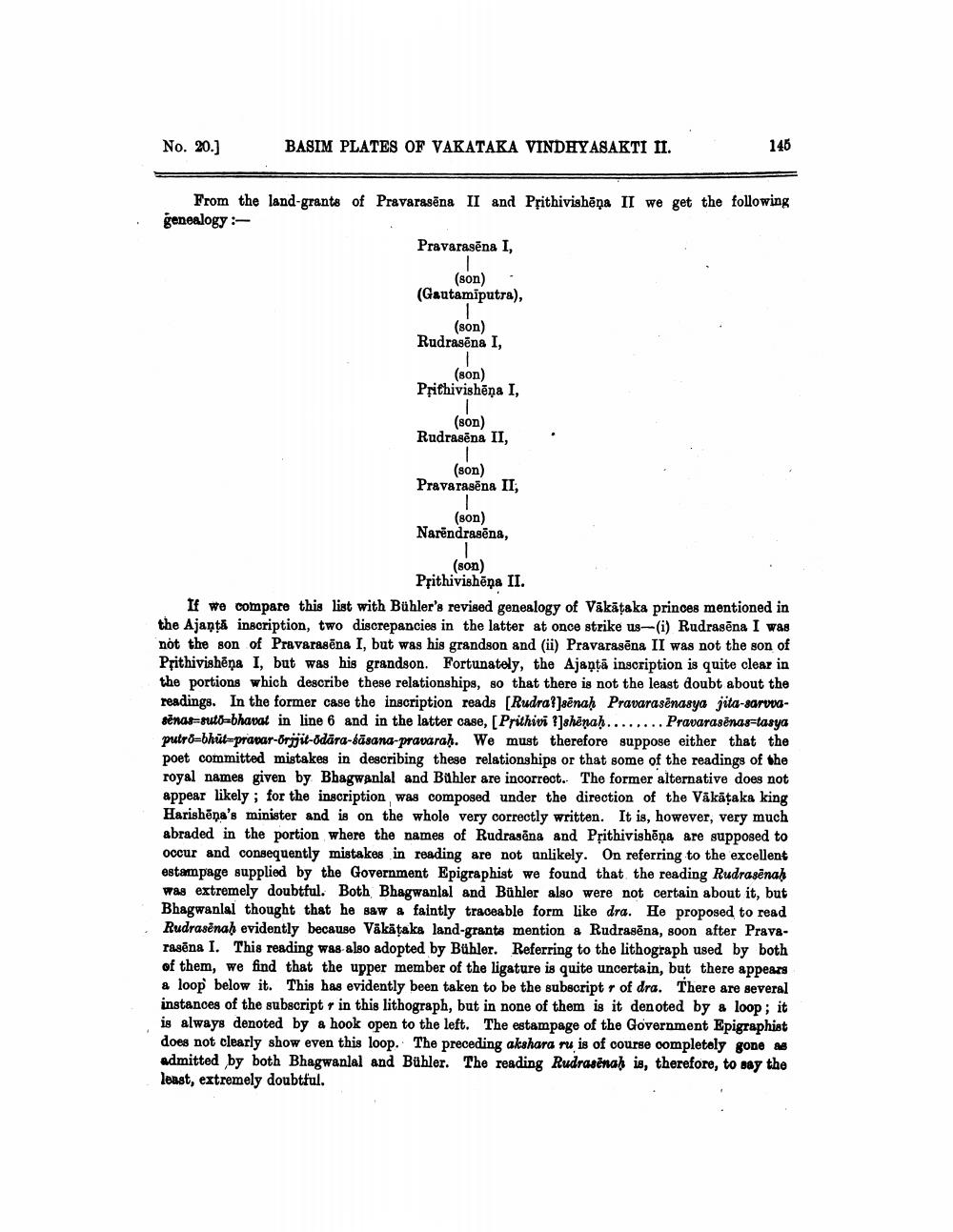________________
No. 20.]
BASIM PLATES OF VAKATAKA VINDHYASAKTI II.
146
BAKTI I
no nomine
From the land-grants of Pravarasēna II and Pțithivishēņa II we get the following genealogy -
Pravarasēna I,
(son) (Gautamiputra),
(son) Rudrasēna I,
(son) Prithivishēna I,
(son) Rudrasēna II,
(son) Pravarasēna II;
(son) Narendrasēna,
(son)
Pțithivishēņa II. If we compare this list with Bühler's revised genealogy of Vākāțaka princes mentioned in the Ajanta inscription, two discrepancies in the latter at once strike us-(i) Rudrasēna I was not the son of Pravarasēna I, but was his grandson and (ii) Pravarasēna II was not the son of Pțithivishēņa I, but was his grandson. Fortunately, the Ajaņtā inscription is quite clear in the portions which describe these relationships, so that there is not the least doubt about the readings. In the former case the inscription reads [Rudra?]sēnah Pravarasēnasya jita-sarvaSēnassuto=bhavat in line 6 and in the latter case, [Prithivi ?]shënaḥ........ Pravarasēnas-tasya putrd=bhūt=prapar-Orjjit-odara-sāsana-pravaraḥ. We must therefore suppose either that the poet committed mistakes in describing these relationships or that some of the readings of the royal names given by Bhagwanlal and Buhler are incorrect. The former alternative does not appear likely; for the inscription was composed under the direction of the Vākāțaka king Harishēna's minister and is on the whole very correctly written. It is, however, very much abraded in the portion where the names of Rudrasena and Prithivishēņa are supposed to occur and consequently mistakes in reading are not unlikely. On referring to the excellent estampage supplied by the Government Epigraphist we found that the reading Rudrasēnah was extremely doubtful. Both Bhagwanlal and Bühler also were not certain about it, but Bhagwanlal thought that he saw a faintly traceable form like dra. He proposed to read Rudrasenah evidently because Väkätaka land-grants mention a Rudrasēna, soon after Pravaragēna I. This reading was also adopted by Bühler. Referring to the lithograph used by both of them, we find that the upper member of the ligature is quite uncertain, but there appears a loop below it. This has evidently been taken to be the subscript r of dra. There are several instances of the subscript r in this lithograph, but in none of them is it denoted by a loop; it is always denoted by a hook open to the left. The estampage of the Government Epigraphist does not clearly show even this loop. The preceding akshara nu is of course oompletely gone as admitted by both Bhagwanlal and Buhler. The reading Rudrasenah is, therefore, to say the least, extremely doubtful.




